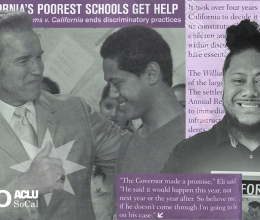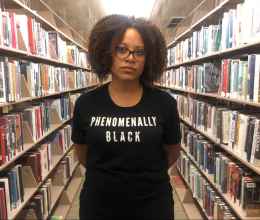
Signed into law last year by Gov. Jerry Brown, the Local Control Funding Formula – a new and historic way of funding California schools – aims to close California’s troubling and enduring achievement gap by spending more state education dollars on the state’s most vulnerable students: low income students, English language learners and foster youth. But that will only be achieved if school districts actually spend the additional dollars they receive under LCFF to serve these high-need students on programs and services that are primarily aimed at meeting those students' unique needs.
The broad coalition of education and civil rights organizations, which included the ACLU of California, called on the state Board of Education to tighten the existing rules to make sure that happens by closing a potential significant loophole in the proposed regulations. The coalition also recommended changes to promote student and parent engagement in developing their local plans for use of LCFF funds, to increase transparency and accessibility of the local spending plans and to ensure that there is meaningful oversight of the district plans.
LCFF resources
The ACLU of California this week also released a number of resources to help support local advocacy as school districts develop their initial local plans under temporary rules that the state Board of Education approved in January. The resources are responsive to concerns that have emerged as districts develop their plans and propose particular uses of funds, often without meaningful community input. As advocates continue to push for stronger rules to guide district decision making, it is critical to ensure that districts follow the rules that already exist.LCFF was premised on delivering greater equity for California’s neediest students and assuring meaningful community engagement in decision making. To fulfill that promise, the state board must close the funding loophole, strengthen transparency and engagement and provide for meaningful oversight.







